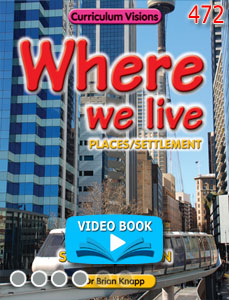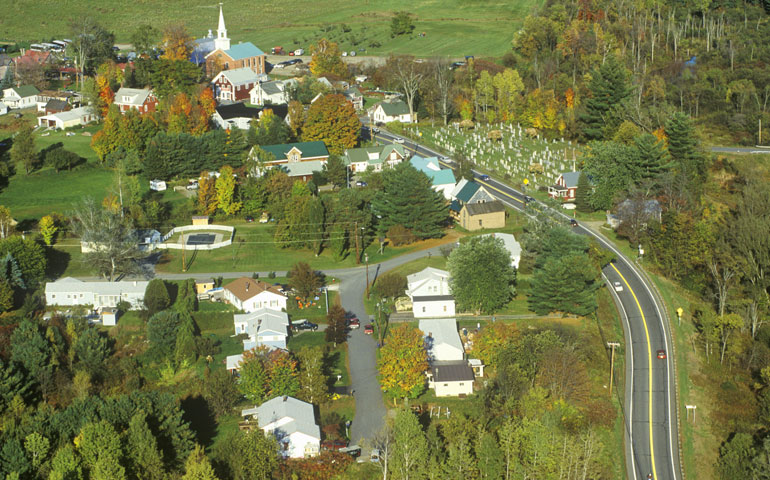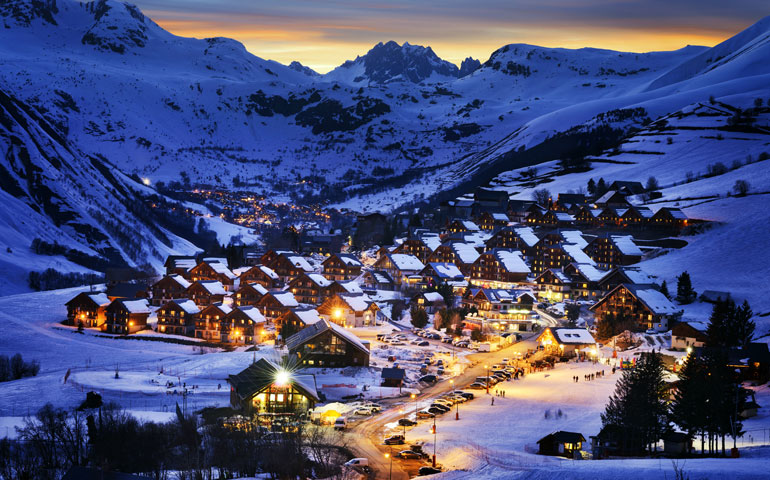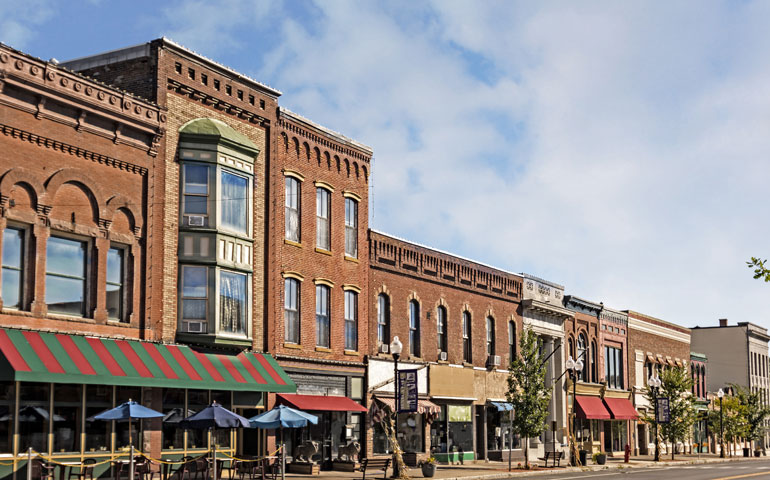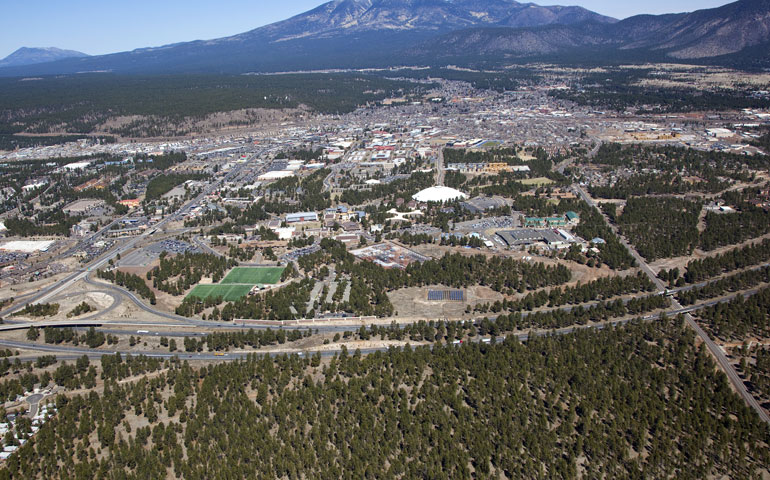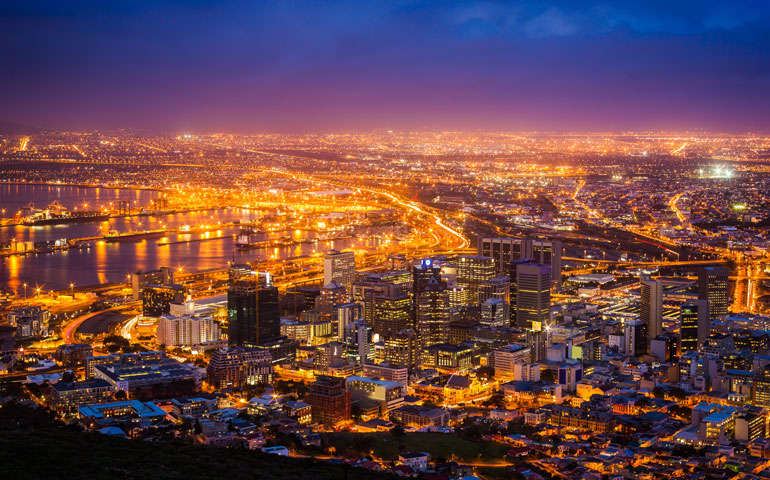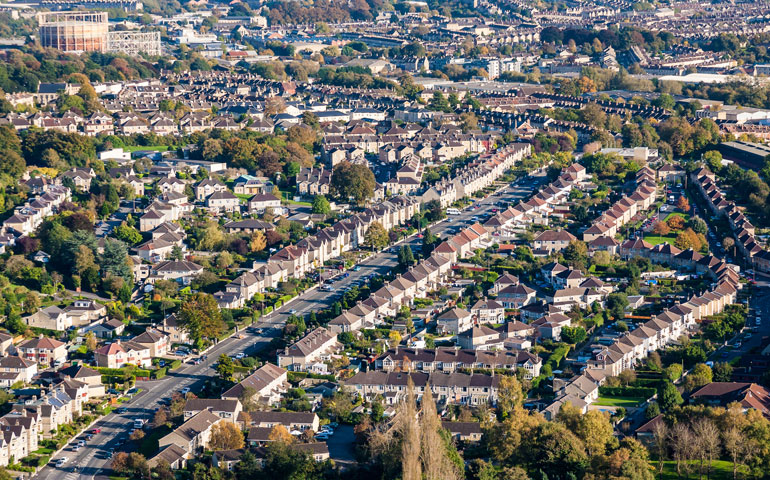A town is a word that we use quite often, but when it comes down to it, it is very hard to say exactly what a town is. Different countries have their own legal ways of talking about villages, towns and cities, but most geographers agree on what makes up each type of place, so it is the geographer's view that we shall take here.
In places where people use the word village, they mean somewhere in the country where you can quickly get out into the fields. There may be a few shops, but they will all be small scale. There will rarely be large areas of housing.
Villages tend to be names used for very old (historic) small places and are common in, for example, Europe and the eastern (colonial) part of the United States. In places which have developed more recently, people use 'small town' instead of village. So, for example, Americans talk of 'small-town America'. Villages and small towns are scattered all over the countryside and are surrounded by farmland. You will not find office blocks in villages and small towns.
Large towns are places where people come to find special goods and stores. You would expect to find a hospital in a large town, for example, but not in a village. Old towns would have had a market right in the centre. They are often called 'market towns'. They may still have a livestock market.
Towns are places which have usually grown up around crossing points of main roads, so they are easy to get to. Many large towns have town halls and a marketplace. They have rows of shops and probably more than one large 24hr superstore.
You will find places for people to work in large towns, perhaps some offices and factories. These are often on the edges of towns.
A city (from a geographer's point of view) is the biggest kind of place there is. It will have hundreds of thousands of people in it, and it will be a major place of factories, offices and businesses. It will have a wide range of entertainments. The way to tell a city is to look across it from above. If there are houses as far as the eye can see, then you are looking at a city.
Most people live in cities, quite a few people live in towns, but only a small number of people live in villages.
Countries across the world are growing more urban. For example, 81% percent of the U.S. population lived in urban areas in 2010, a small rise from the 79 percent counted in 2000. That makes the country's total urban population 250 million.
The New York area is still has the most people in it, with over 18 million residents. Los Angeles has just over 12 million, and Chicago is third with just over 8 million.
But there are 3,500 "urban" areas in the U.S., although the vast majority are small towns, and they don't make up the majority of the places where people live.
There is a big difference between urban areas in what they look like, however. In parts of the Los Angeles urban areas there are 7000 people per square mile, whereas Center, Alabama, has just over 300 people per square mile.
Although they are all urban, we think of them differently. The famous 'small-town' America is made of places with less than 50,000 people. Roughly 80 percent of the U.S. population is urban, and roughly 80 percent of these urban areas are small towns. But the small towns don't make up the places where most people live. The top 50 cities (urban areas) have over half the nation's population!
People like the idea of small-town America because it is a size of place you can grapple with. It is not so huge that you can't think about it. That is why many suburbs think or talk of themselves as 'small towns', or even 'villages' - it helps you to identify with a place you all home if it is small.
